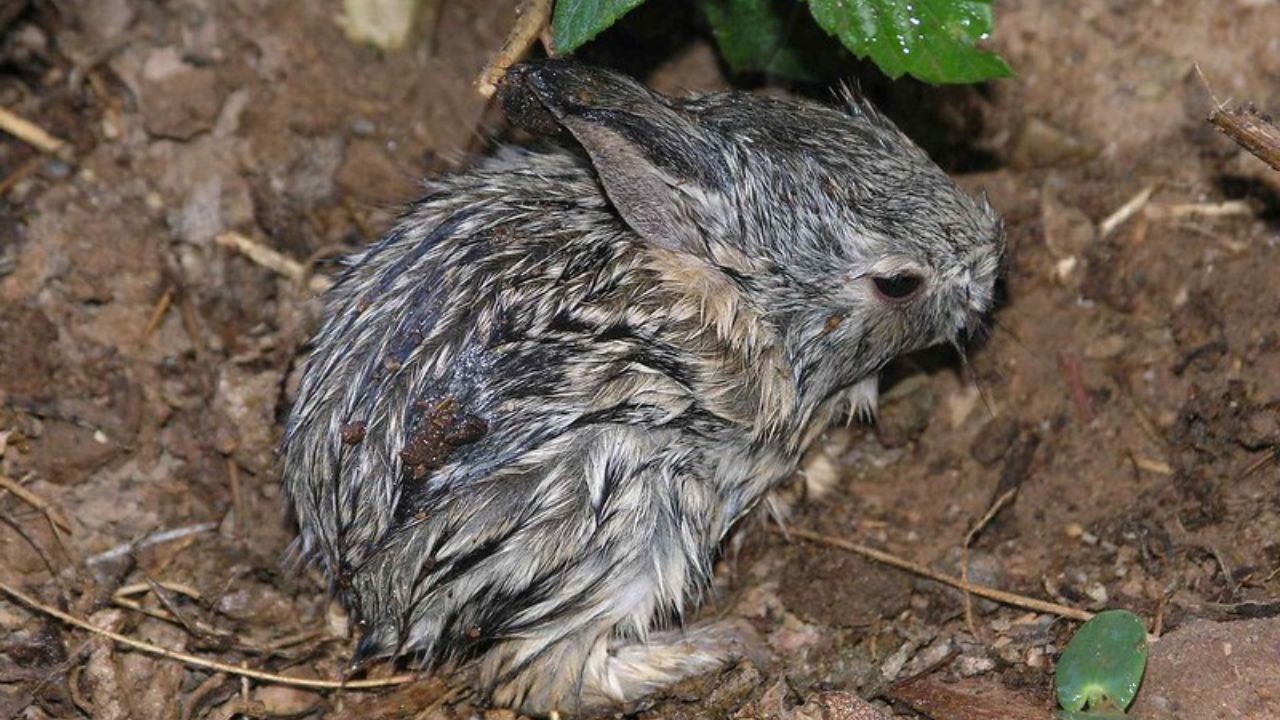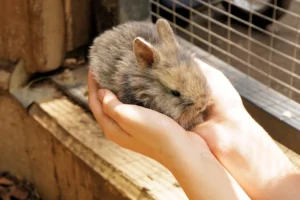Do you ever wonder if your furry friend can suffer any harm from getting wet?
Well, the answer is yes, rabbits can be at risk if they get wet. Wet fur can lead to serious health issues, such as hypothermia, respiratory problems, and skin irritations.
In this article, we will explore the potential risks and provide you with valuable precautions to keep your rabbit dry and healthy.
So, let’s dive into the world of rabbits and their vulnerability to moisture!
In This Article
Key Takeaways
- Wet fur on rabbits can lead to serious health issues including hypothermia, respiratory problems, and skin irritations.
- Hypothermia is a potential risk for wet rabbits and can weaken their immune system, making them more susceptible to illness and disease.
- Proper drying techniques such as towel drying and blow drying on a low heat setting can help prevent hypothermia and promote warmth.
- Wet fur can also lead to respiratory issues and skin problems in rabbits, so it’s important to provide a warm, dry environment with proper ventilation and regularly groom the rabbit to prevent moisture buildup and skin irritation.
The Effects of Wet Fur on a Rabbit’s Health
You should avoid getting your rabbit’s fur wet as it can negatively affect their health. Wet fur can lead to a drop in a rabbit’s body temperature, which can be dangerous for them. Rabbits have a thick coat of fur that acts as insulation and helps regulate their body temperature.
When the fur gets wet, it loses its insulating properties and can cause the rabbit to become cold and stressed. To prevent this from happening, it’s important to keep your rabbit’s living environment dry and provide them with shelter from rain and moisture.
If your rabbit does get wet, it’s essential to dry them off as soon as possible. You can use a clean towel or a hairdryer on a low heat setting to gently dry their fur. It’s important to be careful while drying, as rabbits are sensitive to heat.
Hypothermia: A Potential Risk for Wet Rabbits
Drying off wet rabbits quickly can prevent the development of hypothermia, posing a potential risk to their health. Wet conditions can have a negative impact on a rabbit’s immune system, making them more susceptible to illness and disease. It is important to use proper drying techniques to ensure the well-being of these delicate creatures.
Here are three effective techniques for drying wet rabbits:
| Technique | Description | Benefits |
|---|---|---|
| Towel Drying | Gently pat the rabbit’s fur with a dry towel to absorb moisture. | Prevents hypothermia and promotes warmth. |
| Blow Drying | Use a low heat setting on a blow dryer to dry the rabbit’s fur. | Speeds up the drying process, especially for long-haired breeds. |
| Cage Dryer | Place the rabbit in a well-ventilated area with a cage dryer to evaporate the moisture. | Provides a controlled drying environment.
Respiratory Issues in Wet Rabbits
Ensure the warmth and health of your wet rabbit by monitoring for any signs of respiratory issues. When a rabbit gets wet, it can lead to respiratory problems. To prevent this, it’s important to dry your rabbit properly. Gently towel dry your rabbit, making sure to remove all moisture from its fur. Avoid using a hairdryer as it can cause stress and overheating.
Additionally, ensure that your rabbit has access to a warm, dry environment to aid in the drying process. Proper ventilation is crucial for rabbits with respiratory issues. Good airflow helps to prevent the buildup of moisture and ammonia, which can worsen respiratory problems. Ensure that your rabbit’s living area is well-ventilated and free from drafts.
Regularly clean and disinfect the cage to maintain a healthy environment for your rabbit’s respiratory health.
Skin Problems Caused by Excessive Moisture
Don’t ignore your rabbit’s skin problems caused by excessive moisture; it’s important to address them promptly. Excessive moisture can lead to skin irritation and other health issues in rabbits. To prevent skin problems, proper grooming techniques are crucial.
Regularly brushing your rabbit’s fur helps remove excess moisture and prevents matting, which can trap moisture against the skin. Additionally, providing a clean and dry living environment is essential. Avoid using damp bedding or keeping your rabbit in a wet or humid area.
Here is a table to summarize some grooming techniques that can help prevent skin irritation in rabbits:
| Grooming Technique | Benefits |
|---|---|
| Regular brushing | Removes excess moisture and prevents matting |
| Keeping the living area clean and dry | Prevents the buildup of moisture and reduces the risk of skin problems |
Precautions to Keep Your Rabbit Dry and Healthy
To keep your rabbit dry and healthy, regularly check their living area for any signs of moisture and ensure it’s well-ventilated. Wet weather can be detrimental to your rabbit’s health, so it’s important to take precautions to protect them outdoors. Here are some tips to keep your rabbit dry in wet weather:
- Provide a waterproof shelter: Ensure your rabbit has a dry and cozy shelter that protects them from rain and wind. A hutch with a waterproof cover or a sturdy wooden shed can provide the necessary protection.
- Use bedding materials wisely: Opt for absorbent bedding materials like straw or hay. Avoid using materials like wood shavings that can retain moisture and make the living area damp.
- Groom your rabbit regularly: Regular grooming is essential to keep your rabbit’s fur dry and prevent it from matting. Use a soft brush to remove any moisture or dirt that may have accumulated on their fur.
- Monitor your rabbit’s health: Wet weather can increase the risk of respiratory problems in rabbits. Keep a close eye on their behavior and look out for any signs of illness such as sneezing, coughing, or lethargy. If you notice any concerning symptoms, consult a veterinarian immediately.
Frequently Asked Questions
How Often Should I Bathe My Rabbit?
To bathe your rabbit, start by checking if it’s necessary. Rabbits are generally good at grooming themselves. If your rabbit does get wet, make sure to dry it thoroughly using a towel. Wet fur can lead to skin infections.
Can Rabbits Swim?
Rabbits can swim, but it’s not natural for them. They can drown if they’re not careful. Additionally, getting wet can lead to ear infections, so it’s best to keep them dry.
What Are Some Signs of Hypothermia in Rabbits?
If your rabbit shows signs of hypothermia, such as shivering or cold ears, it’s crucial to act quickly. To prevent this, ensure they have warm bedding, shelter, and limit their exposure to cold and wet conditions.
Can Rabbits Catch a Cold From Getting Wet?
Getting wet can affect a rabbit’s body temperature and potentially lead to respiratory issues. It’s important to keep your rabbit dry and provide proper shelter to prevent any negative health consequences.
Are There Certain Breeds of Rabbits That Are More Susceptible to Skin Problems Caused by Excessive Moisture?
Certain breeds of rabbits may be more susceptible to specific skin problems caused by excessive moisture. Common skin conditions in rabbits include dermatitis and fur mites, which can be exacerbated by wet environments.





